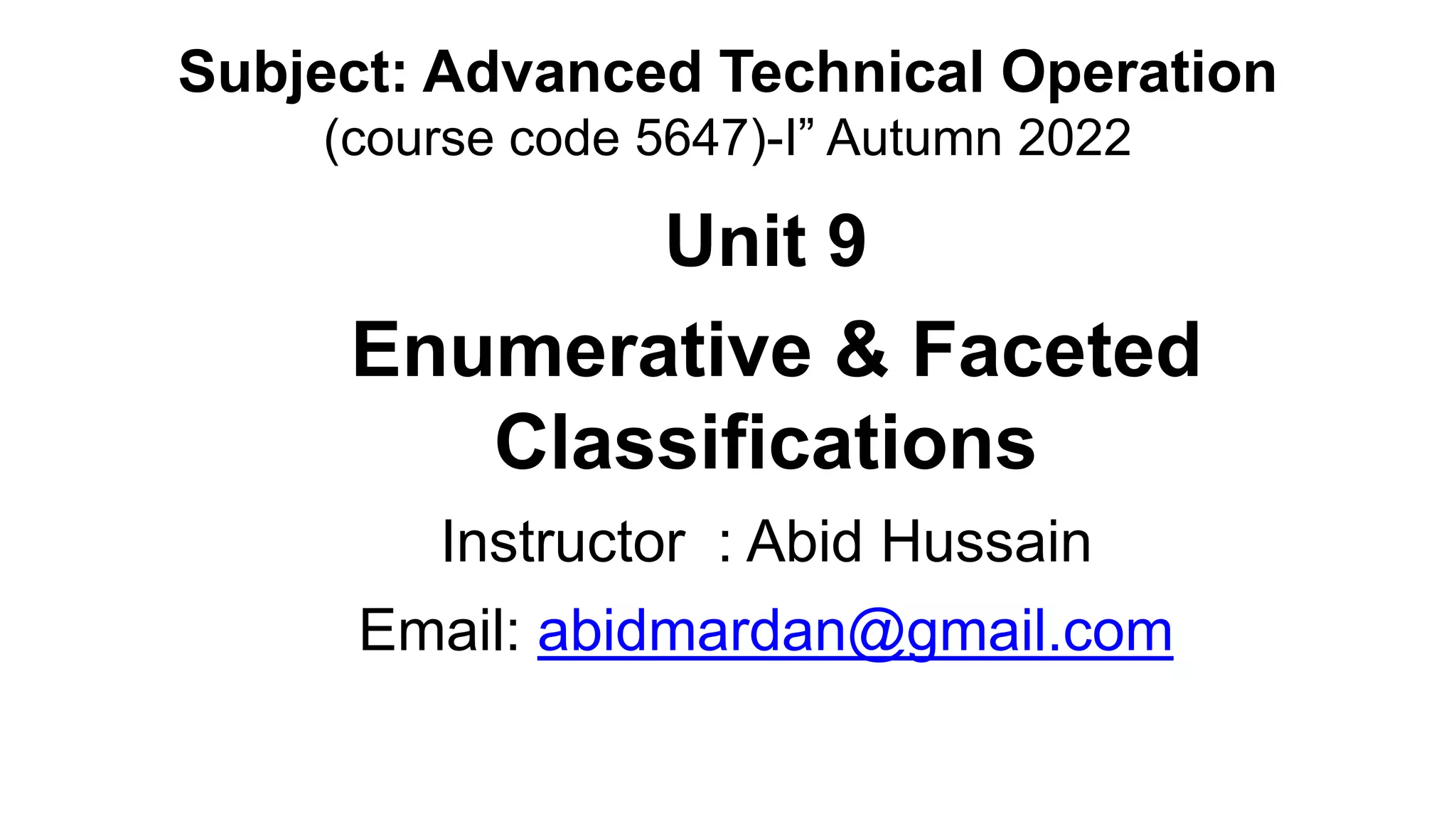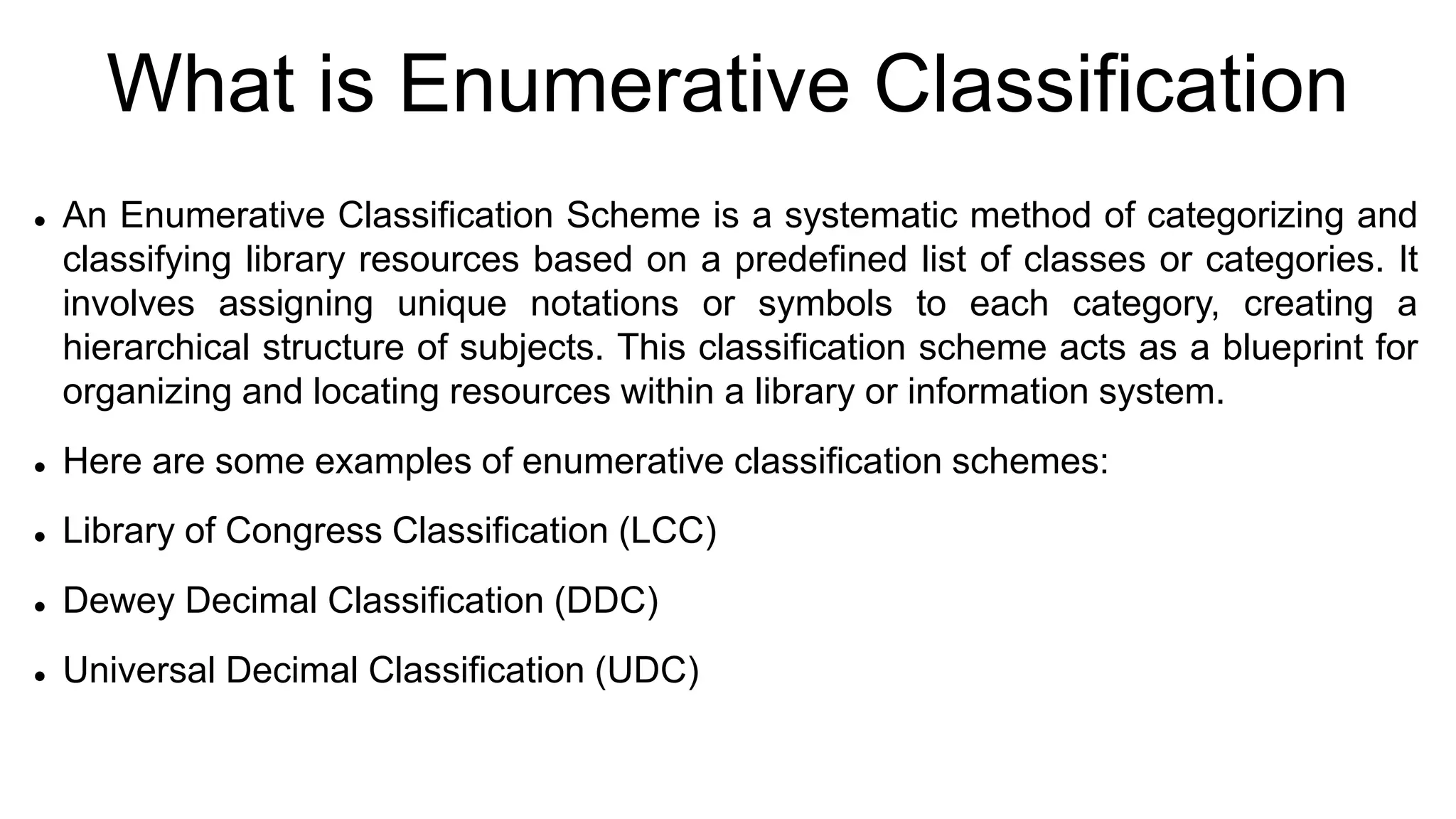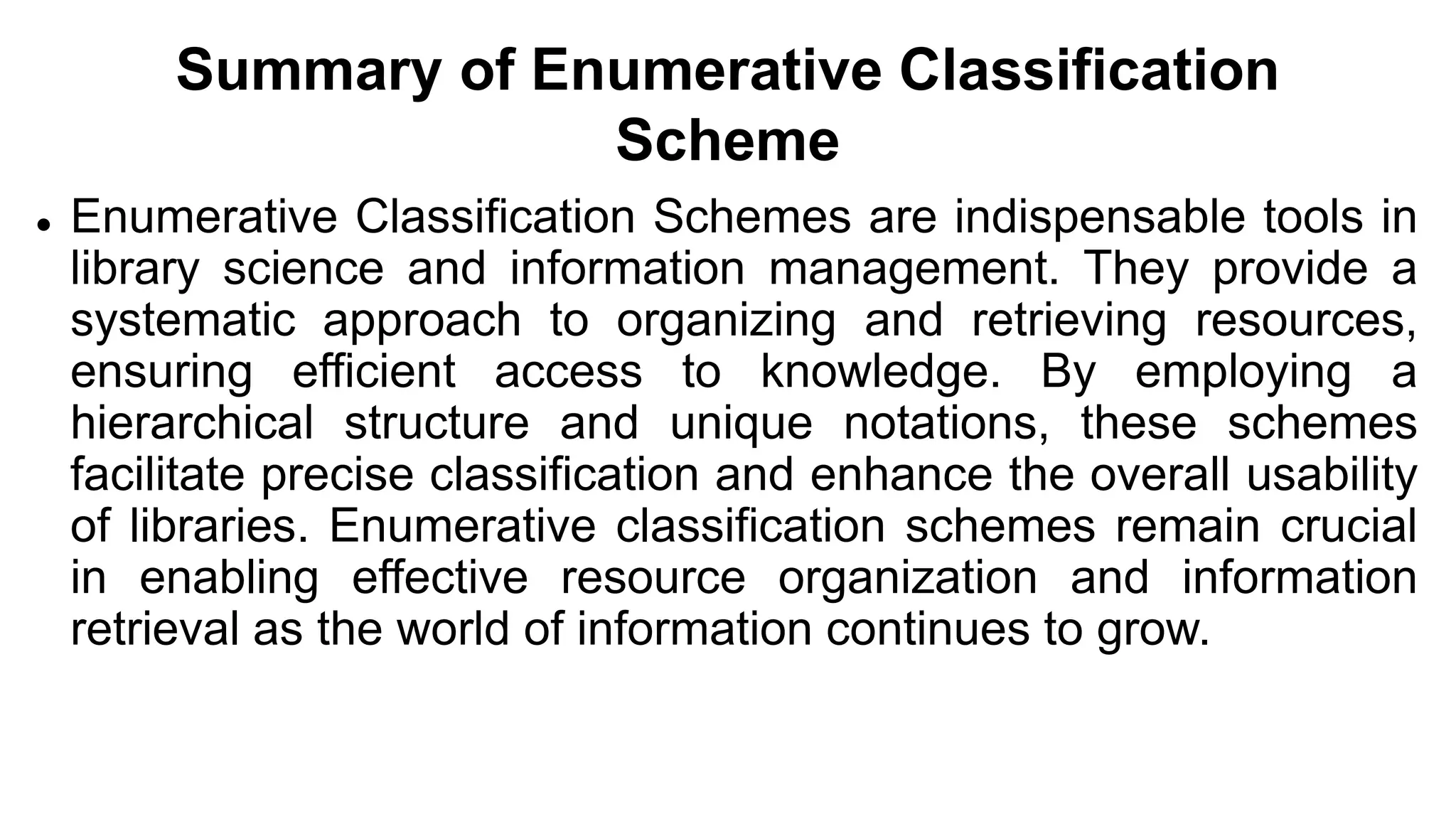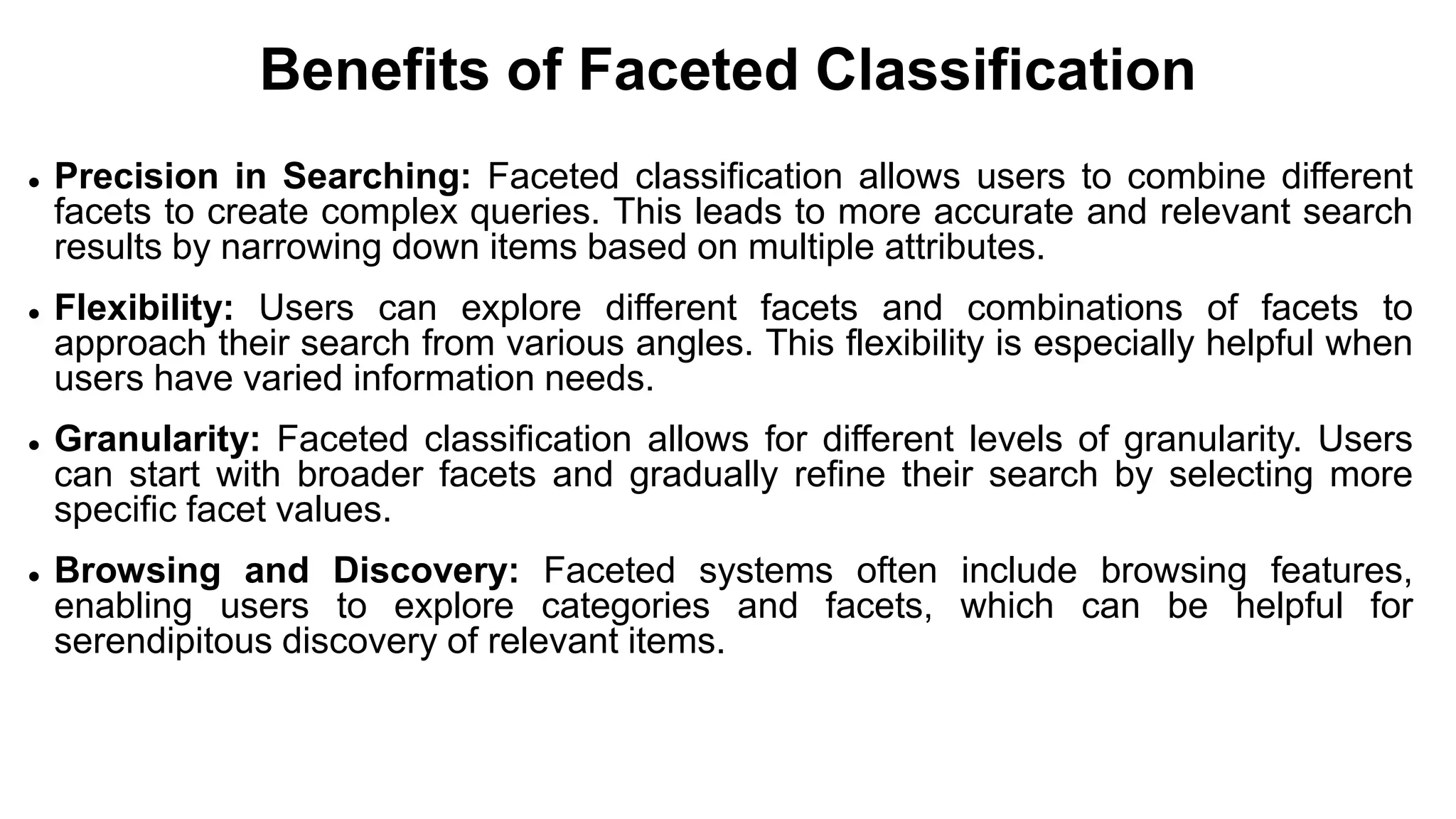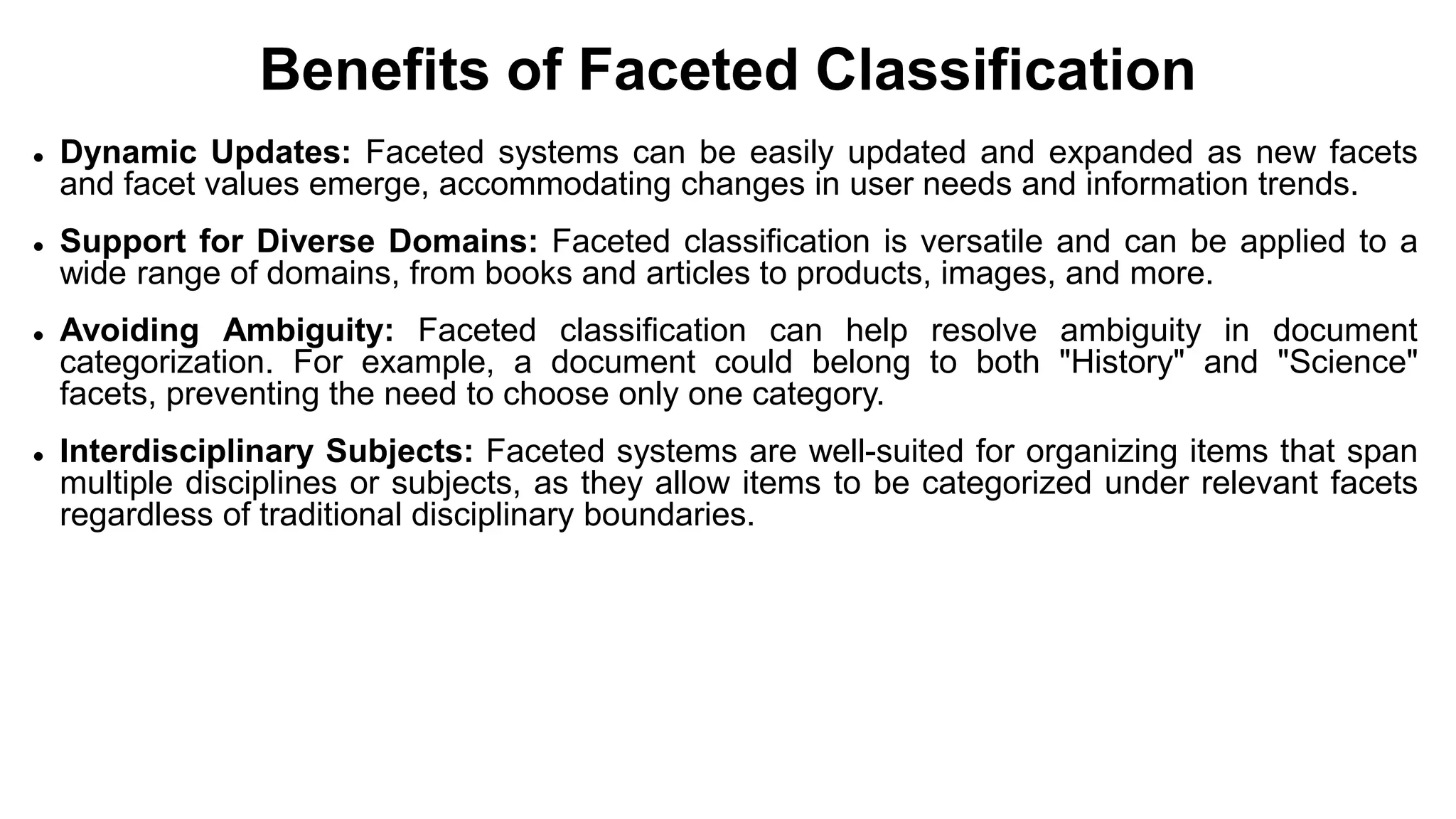This document provides information about enumerative and faceted classification schemes. It discusses enumerative classification schemes, noting that they involve assigning unique notations or symbols to predefined categories to create a hierarchical structure for organizing resources. Examples provided include the Library of Congress Classification and Dewey Decimal Classification. The benefits of enumerative schemes are also summarized, including efficient retrieval, consistency, subject browsing, and facilitating information organization. Faceted classification is then introduced as a system that organizes information based on multiple independent attributes or facets, allowing for more precise categorization. The components and benefits of faceted classification are outlined.
